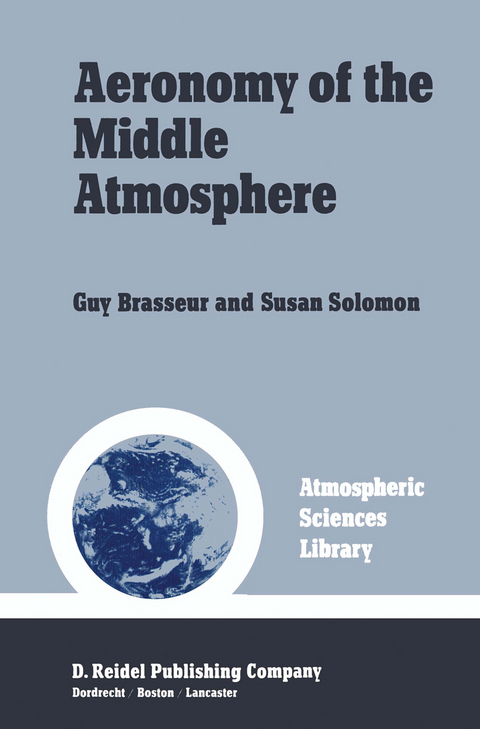
Aeronomy of the Middle Atmosphere
Springer (Verlag)
978-94-009-6403-7 (ISBN)
The reader may be surprised to learn that the word "aeronomy" is not found in many of the standard dictionaries of the English language (for exam ple. Webster's International dictionary). Yet the term would appear to exist, as evidenced by the affiliations of the two authors of this volume (Institut d'Aeronomie, Brussels, Belgium; Aeronomy Laboratory, National Oceanic and Atmospheric Administration, Boulder, CO, USA). Perhaps part of this obscu rity arises because aeronomy is a relatively new and evolving field of endeavor, with a history dating back no farther than about 1940. The Chambers dic tionary of science and technology provides the following definition: "aeronomy (Meteor. ). The branch of science dealing with the atmosphere of the Earth and the other planets with reference to their chemical com position, physical properties, relative motion,
1. The Middle Atmosphere and Its Evolution.- 1.1 Introduction.- 1.2 Evolution of the Earth’s atmosphere.- 1.3 Possible perturbations.- References.- 2. Chemical Concepts in the Atmosphere.- 2.1 Introduction.- 2.2 Thermodynamic considerations.- 2.3 Elementary chemical kinetics.- 2.4 Term symbols and their use.- 2.5 Photolysis processes.- 2.6 Excited species in the middle atmosphere.- References and bibliography.- 3. Structure and Dynamics.- 3.1 Introduction.- 3.2 Vertical structure and some observed dynamical characteristics.- 3.3 Fundamental description of atmospheric dynamics.- 3.4 Effects of dynamics on chemical species.- 3.5 General circulation models.- 3.6 Dynamics of the stratosphere in two dimensions: a conceptual view.- 3.7 The importance of wave transience and dissipation.- 3.8 One-dimensional representations of the atmosphere.- References.- 4. Radiation.- 4.1 Introduction.- 4.2 Solar radiation at the top of the atmosphere.- 4.3 Attenuation of solar radiation in the atmosphere.- 4.4 Radiative transfer.- 4.5 Thermal effects of radiation.- 4.6 Photochemical effects of radiation.- References.- 5. Composition and Chemistry.- 5.1 General.- 5.2 Oxygen compounds.- 5.3 Carbon compounds.- 5.4 Hydrogen compounds.- 5.5 Nitrogen compounds.- 5.6 Chlorine compounds.- 5.7 Other halogens.- 5.8 Sulfur compounds and formation of aerosol.- 5.9 Generalized ozone balance.- References.- 6. The Ions.- 6.1 Introduction.- 6.2 Formation of ions in the middle atmosphere.- 6.3 Positive ion chemistry.- 6.4 Negative ion chemistry.- 6.5 Effect of ionic processes on neutral constituents.- 6.6 Radio waves in the lower ionosphere.- References.- 7. Possible Perturbations and Atmospheric Responses.- 7.1 Introduction.- 7.2 The importance of coupling in the study of perturbations.- 7.3 The effectof changes in the solar irradiance.- 7.4 Particle precipitation.- 7.5 Volcanic emissions.- 7.6 Anthropogenic emissions.- References.- Appendix A. Numerical values of physical constants and other data.- Appendix B. Conversion factors.
| Erscheint lt. Verlag | 12.11.2011 |
|---|---|
| Reihe/Serie | Atmospheric Sciences Library |
| Zusatzinfo | XVI, 444 p. |
| Verlagsort | Dordrecht |
| Sprache | englisch |
| Maße | 155 x 235 mm |
| Themenwelt | Naturwissenschaften ► Geowissenschaften ► Geologie |
| Naturwissenschaften ► Geowissenschaften ► Meteorologie / Klimatologie | |
| ISBN-10 | 94-009-6403-X / 940096403X |
| ISBN-13 | 978-94-009-6403-7 / 9789400964037 |
| Zustand | Neuware |
| Haben Sie eine Frage zum Produkt? |
aus dem Bereich


